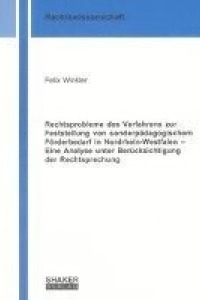
Liknande böcker
Investigation of Trailing-Edge Blowing on Airfoils for Turbomachinery Broadband Noise Reduction
Bok av Julian Winkler
Aerodynamically generated sound is the major cause for large noise emission from turbomachinery including turbofan engines, wind turbines, helicopters, and cooling fans in a large variety of industrial applications. The following study deals with a method for turbomachinery noise reduction called trailing-edge blowing. This method is, in principle, applicable to any turbomachinery application but has so far been intended almost exclusively for noise reduction in the fan stage of modern turbofan engines. This method involves the addition of a secondary air flow through the trailing edge of a rotor, with wh ich the rotor wake momentum deficit is filled and its turbulence is reduced. This energized wake produces less rotor-stator interaction noise when it impinges on a downstream stator vane. While this method has proven to be effective for tonal noise reduction, investigations regarding the broadband noise reduction potential have largely lacked a detailed analysis of all relevant noise mechanisms that are affected by this method.Trailing-edge blowing for broadband noise reduction will be studied here on single airfoils and on two airfoils in tandem at low Mach numbers and high Reynolds numbers. The investigations will be conducted on different trailing edge blowing designs. Experiments will be conducted in an aeroacoustic wind tunnel and include measurements of the acoustic far field, the unsteady pressure sources on the airfoils, and the turbulent wake manipulated by blowing. In addition, several incompressible large-eddy simulations will be performed for a detailed analysis and assessment of the turbulent noise sourees. The acoustic far-field will be predicted from these simulations using different analytical models and a computational aeroacoustic approach.It will be shown that trailing-edge blowing affects two competing noise mechanisms. The wake turbulence is successfully reduced by trailing-edge blowing and a noise reduction for frequencies below 2kHz can be observed when this modified wake impinges on a downstream airfoil (wake-airfoil interaction noise). However, the blowing jet itself produces high-frequency noise above 2kHz as it interacts with the trailing edge of the blowing airfoil (blowing self-noise). This additional self-noise diminishes the noise reduction through wake manipulation. The overall integrated noise reduction potential will be shown to be of the order of 2.9dB for an airfoil equipped with a single wide blowing slot. Improvements can be made by segmenting the spanwise slot into an array of discrete channels. This increases the blowing velocity while reducing the required mass-flow rate to add the same blowing momentum. The overall noise reduction is enhanced to 4.1dB due to an improved mixing of the blowing jet with the external airfoil flow. These reduction levels occur for partial wake-filling, for which the tonal noise---as a result of the mean wake velocity deficit---would not be fully eliminated in a turbomachine. For complete wake-filling conditions the broadband noise reduction can be considerably lower, depending on the blowing geometry. In that ca se, additional complementary techniques may become necessary to passively reduce the high-frequency blowing self-noise. It will be shown that a porous edge can help to reduce the acoustic efficiency ofthe blowingjet interaction with the trailing edge and thereby improve the overall possible noise reduction levels from trailingedge blowing. Conversely, serrated edges will largely yield negative acoustic effects for the configurations investigated in this study.







